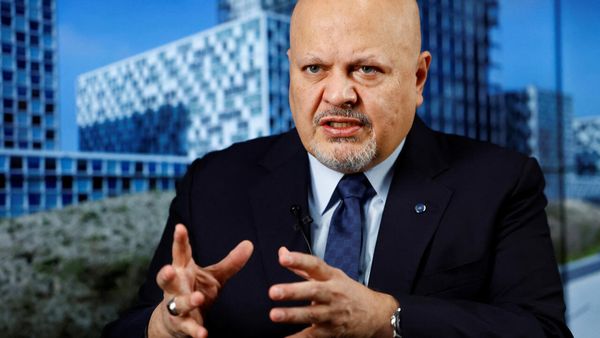Bob Strauss, the venerable Dallas lawyer-lobbyist and longtime Democratic Party leader, used to say that, in politics, things are never as good as they seem or as bad as they seem.
That’s a good thing to remember as falling gas prices, passage of some major legislation and the dramatic raid that killed al-Qaida’s leader have inspired a spate of stories about Joe Biden’s comeback from near political oblivion – and the potential impact on Democratic chances this November.
After all, it is still nearly three months until Americans fill all 435 House seats, 35 Senate slots and 36 state governorships. A lot can still go wrong. And Biden’s job approval levels remain sufficiently low that they are still a distinct negative for his party.
Still, it is clear events of recent weeks have energized Democratic voters, making their leaders more optimistic – and the Republicans more concerned – than just weeks ago.
For almost a year, the conventional storyline surrounding Biden has been one of failure to manage events. It stemmed from his botched withdrawal from Afghanistan, his inability to anticipate and curb soaring inflation, and the much-publicized divisions that prevented his Democratic congressional allies from passing key parts of his economic agenda.
That combination dropped Biden’s job approval below 40% and spawned stories that many Democrats hope the 79-year-old president doesn’t run again in 2024. In the shorter term, it created the widespread expectation within both parties that Democrats were headed for a midterm electoral disaster that would cost them control of the House – and probably the Senate.
But in recent weeks, that outlook has changed for the better. Gas prices have dropped steadily, and lawmakers finally got their act together to pass three key bipartisan measures – a modest gun safety bill, increased support for the domestic semi-conductor industry and significant new health benefits for veterans.
Most importantly, perhaps, Senate Democrats resolved internal divisions and passed a slimmed-down version of Biden’s economic agenda. It included long sought authority for Medicare to negotiate lower drug prices, extension of Obamacare subsidies for millions and a significant investment in clean energy technology to fight climate change.
Its final passage will enable Democratic candidates to stress the positive things they achieved for voters, rather than spend the campaign defending their party’s failure to curb inflation.
Meanwhile, despite persistent recession fears – and a modest drop in total economic output during the first half of 2022 – the job market continues to expand. Unemployment is now lower than before the COVID pandemic struck in early 2020.
The Democrats have also gotten help in at least two ways from their political enemies.
In several key states, Republicans heeded former President Donald Trump’s siren song and nominated conservative neophytes for Senate seats and governorships. That has increased the likelihood that Democrats can keep the Senate and several key Midwest and swing state governorships.
Second, the unexpectedly sweeping Supreme Court decision that overturned its 1973 ruling legalizing abortions has prompted a backlash among abortion rights advocates that is generating the previously lacking Democratic voter enthusiasm.
In the first post-decision voter test of the issue, a substantial majority of voters in conservative Kansas voted to keep the state constitution’s guarantee of abortion rights.
Recent polls show increased enthusiasm for voting this November among Democratic voters, especially younger ones. Pollsters attribute the change to their opposition to the court’s abortion decision and vows by many Republicans to follow up by banning virtually all abortions, as Indiana did last weekend.
Ironically, Biden’s improvement came while he was quarantined in the White House after testing positive for COVID, an echo of the fact that he won the presidency in 2020 while self-isolating in his Wilmington, Delaware, basement.
Still, there has only been a modest uptick in his weak job approval level. Further improvement is needed before he is no longer a potential drag on his party’s chances.
Analysts traditionally say that, if the president’s job approval is under 50 at the time of a midterm election, his party is in danger of losing the House. When Democrats lost the House in 2020, President Barack Obama’s job approval was 45; when the GOP lost control in 2018, Trump’s stood at 40.
In both the Real Clear Politics and fivethirtyeight.com averages, Biden’s job approval remains under 40%. However, as Simon Rosenberg’s NDN has documented, there has been a distinct Democratic gain in the generic congressional vote to even or a bit above, though probably not yet enough to retain their narrow House majority.
One major election wild card is Trump’s projected announcement that he will seek to regain the presidency in 2024. Many GOP leaders fear that, if he makes that announcement before the elections, the controversial former president will put more election focus on himself than on issues like inflation, which Republican candidates prefer to emphasize. Monday’s FBI raids on Trump’s Florida home add another unpredictable factor.
And although his support for the 2024 GOP nomination remains strong, a recent CNN poll showed that 50% of Republicans and GOP-leaning independents don’t want Trump to run again.
Midterm elections are traditionally a referendum on the incumbent president and his administration. Democrats hope their recent successes – and the looming presence of Trump – will let them make it a choice between the two parties and thus help avoid the electoral disaster they once feared.







